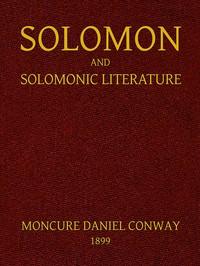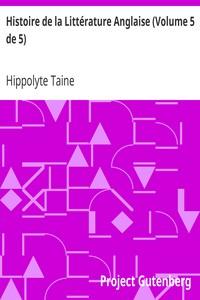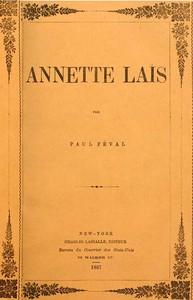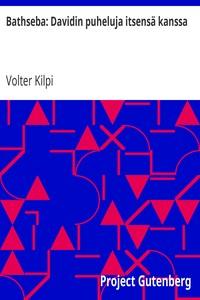Read this ebook for free! No credit card needed, absolutely nothing to pay.
Words: 73669 in 18 pages
This is an ebook sharing website. You can read the uploaded ebooks for free here. No credit cards needed, nothing to pay. If you want to own a digital copy of the ebook, or want to read offline with your favorite ebook-reader, then you can choose to buy and download the ebook.


: Solomon and Solomonic Literature by Conway Moncure Daniel - Solomon King of Israel; Hebrew literature History and criticism
WILLIAM MORRIS
Notes on Woodcut Books
ON THE ARTISTIC QUALITIES OF THE WOODCUT BOOKS OF ULM AND AUGSBURG IN THE FIFTEENTH CENTURY.
The invention of printing books, and the use of wood-blocks for book ornament in place of hand-painting, though it belongs to the period of the degradation of mediaeval art, gave an opportunity to the Germans to regain the place which they had lost in the art of book decoration during the thirteenth and fourteenth centuries. This opportunity they took with vigour and success, and by means of it put forth works which showed the best and most essential qualities of their race. Unhappily, even at the time of their first woodcut book, the beginning of the end was on them; about thirty years afterwards they received the Renaissance with singular eagerness and rapidity, and became, from the artistic point of view, a nation of rhetorical pedants. An exception must be made, however, as to Albert D?rer; for, though his method was infected by the Renaissance, his matchless imagination and intellect made him thoroughly Gothic in spirit. Amongst the printing localities of Germany the two neighbouring cities of Ulm and Augsburg developed a school of woodcut book ornament second to none as to character, and, I think, more numerously represented than any other. I am obliged to link the two cities, because the early school at least is common to both; but the ornamented works produced by Ulm are but few compared with the prolific birth of Augsburg.
It is a matter of course that the names of the artists who designed these wood-blocks should not have been recorded, any more than those of the numberless illuminators of the lovely written books of the thirteenth and fourteenth centuries; the names under which the Ulm and Augsburg picture-books are known are all those of their printers. Of these by far the most distinguished are the kinsmen , Gunther Zainer of Augsburg and John Zainer of Ulm. Nearly parallel with these in date are Ludwig Hohenwang and John B?mler of Augsburg, together with Pflanzmann of Augsburg, the printer of the first illustrated German Bible. Anthony Sorg, a little later than these, was a printer somewhat inferior, rather a reprinter in fact, but by dint of reusing the old blocks, or getting them recut and in some cases redesigned, not always to their disadvantage, produced some very beautiful books. Schoensperger, who printed right into the sixteenth century, used blocks which were ruder than the earlier ones, through carelessness, and I suppose probably because of the aim at cheapness; his books tend towards the chap-book kind.
The earliest of these picture-books with a date is Gunther Zainer's Golden Legend, the first part of which was printed in 1471; but, as the most important from the artistic point of view, I should name: first, Gunther Zainer's Speculum Humanae Salvationis ; second, John Zainer's Boccaccio De Claris Mulieribus ; third, the AEsop, printed by both the Zainers, but I do not know by which first, as it is undated; fourth, Gunther Zainer's Spiegel des Menschlichen lebens , with which must be taken his German Belial, the cuts of which are undoubtedly designed by the same artist, and cut by the same hand, that cut the best in the Spiegel above mentioned; fifth, a beautiful little book, the story of Sigismonda and Guiscard, by Gunther Zainer, undated; sixth, Tuberinus, die geschicht von Symon, which is the story of a late German Hugh of Lincoln, printed by G. Zainer about 1475; seventh, John B?mlers Das buch der Natur , with many full-page cuts of much interest; eighth, by the same printer, Das buch von den 7 Tods?nden und den 7 Tugenden ; ninth, B?mler's Sprenger's Rosencranz Bruderschaft, with only two cuts, but those most remarkable.
To these may be added as transitional , between the earlier and the later school next to be mentioned, two really characteristic books printed by Sorg:
Der Seusse, a book of mystical devotion, 1482, and
the Council of Constance, printed in 1483; the latter being, as far as its cuts are concerned, mainly heraldic.
At Ulm, however, a later school arose after a transitional book, Leonard Hol's splendid Ptolemy of 1482; of this school one printer's name, Conrad Dinckmut, includes all the most remarkable books: to wit, Der Seelen-wurzgarten , Das buch der Weisheit , the Swabian Chronicle , Terence's Eunuchus . Lastly, John Reger's Descriptio Obsidionis Rhodiae worthily closes the series of the Ulm books.
It should here be said that, apart from their pictures, the Ulm and Augsburg books are noteworthy for their border and letter decoration. The Ulm printer, John Zainer, in especial shone in the production of borders. His De Claris Mulieribus excels all the other books of the school in this matter; the initial S of both the Latin and the German editions being the most elaborate and beautiful piece of its kind; and, furthermore, the German edition has a border almost equal to the S in beauty, though different in character, having the shield of Scotland supported by angels in the corner. A very handsome border , with a zany in the corner, used frequently in J. Zainer's books , e.g., in the 1473 and 1474 editions of the Rationale of Durandus, and, associated with an interesting historiated initial O, in Alvarus, De planctu Ecclesiae, 1474. There are two or three other fine borders, such as those in Steinhowel's B?chlein der Ordnung, and Petrarch's Griseldis , both of 1473, and in Albertus Magnus, Summa de eucharistiae Sacramento, 1474. A curious alphabet of initials made up of leafage, good, but not very showy, is used in the De Claris Mulieribus and other books. An alphabet of large initials, the most complete example of which is to be found in Leonard Hol's Ptolemy, is often used and is clearly founded on the pen-letters, drawn mostly in red and blue, in which the Dutch 'rubrishers' excelled. This big alphabet is very beautiful and seems to have been a good deal copied by other German printers, as it well deserved to be. John Reger's Caoursin has fine handsome 'blooming-letters,' somewhat tending toward the French style.
In Augsburg Gunther Zainer has some initial I's of strap-work without foliation: they are finely designed, but gain considerably when, as sometimes happens, the spaces between the straps are filled in with fine pen-tracery and in yellowish brown; they were cut early in Gunther's career, as one occurs in the Speculum Humanae Salvationis, c. 1471, and another in the Calendar, printed 1471. These, as they always occur in the margin and are long, may be called border-pieces. A border occurring in Eyb, ob einem manne tzu nemen ein weib is drawn very gracefully in outline, and is attached, deftly enough, to a very good S of the pen-letter type, though on a separate block; it has three shields of arms in it, one of which is the bearing of Augsburg. This piece is decidedly illuminators' work as to design.
Free books android app tbrJar TBR JAR Read Free books online gutenberg
More posts by @FreeBooks

: Histoire de la Littérature Anglaise (Volume 5 de 5) by Taine Hippolyte - English literature History and criticism France; FR Littérature


: Annette Laïs by F Val Paul - Actresses Fiction; Nobility France Fiction; French fiction 19th century FR Littérature





